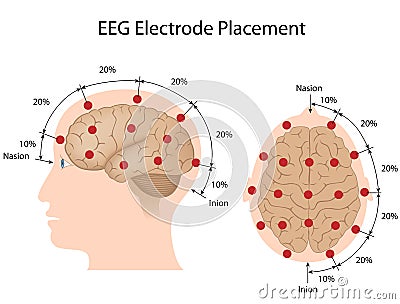

Beck started experiments on the electrical brain activity of animals. In 1890, Polish physiologist Adolf Beck published an investigation of spontaneous electrical activity of the brain of rabbits and dogs that included rhythmic oscillations altered by light. In 1875, Richard Caton (1842–1926), a physician practicing in Liverpool, presented his findings about electrical phenomena of the exposed cerebral hemispheres of rabbits and monkeys in the British Medical Journal. Event-related potentials (ERPs) refer to averaged EEG responses that are time-locked to more complex processing of stimuli this technique is used in cognitive science, cognitive psychology, and psychophysiological research. It is one of the few mobile techniques available and offers millisecond-range temporal resolution which is not possible with CT, PET or MRI.ĭerivatives of the EEG technique include evoked potentials (EP), which involves averaging the EEG activity time-locked to the presentation of a stimulus of some sort (visual, somatosensory, or auditory). Despite limited spatial resolution, EEG continues to be a valuable tool for research and diagnosis. EEG used to be a first-line method of diagnosis for tumors, stroke and other focal brain disorders, but this use has decreased with the advent of high-resolution anatomical imaging techniques such as magnetic resonance imaging (MRI) and computed tomography (CT). It is also used to diagnose sleep disorders, depth of anesthesia, coma, encephalopathies, and brain death. The latter analyses the type of neural oscillations (popularly called "brain waves") that can be observed in EEG signals in the frequency domain.ĮEG is most often used to diagnose epilepsy, which causes abnormalities in EEG readings. The former investigates potential fluctuations time locked to an event, such as 'stimulus onset' or 'button press'. Diagnostic applications generally focus either on event-related potentials or on the spectral content of EEG. Clinically, EEG refers to the recording of the brain's spontaneous electrical activity over a period of time, as recorded from multiple electrodes placed on the scalp. Electrocorticography, involving invasive electrodes, is sometimes called intracranial EEG.ĮEG measures voltage fluctuations resulting from ionic current within the neurons of the brain. It is typically non-invasive, with the electrodes placed along the scalp. This reduces the TMS stimulation artifact in the EEG recording and allows to have a clean recording within a few ms after the TMS pulse.īoth use sintered Ag/AgCl electrode material for perfect EEG data resolution from 0 to 10 kHz.Electroencephalography ( EEG) is a method to record an electrogram of the electrical activity on the scalp that has been shown to represent the macroscopic activity of the surface layer of the brain underneath. It is connected via the g.GAMMAbox to the g.USBamp and via the electrode connector boxes to the g.HIamp.įor TMS recordings, we offer a g.LADYbird passive version that does not have electronic components inside the electrode itself. The g.LADYbird active electrode is designed to work with all g.HIamps and g.USBamps. g.LADYbird active EEG electrodes were designed to make physiological setups for EEG/ECG/EMG/EOG recording fast and easy, while still using a comfortable EEG cap that provides very high signal quality. If we look back to all the BCI experiments done with passive electrodes compared to experiments done with g.LADYbird active electrodes, than we get about 10% better accuracy. You don’t want to lose any second of data just because you didn’t use the best EEG equipment- especially if you work with patients. Thousands of recordings have shown that the g.LADYbird outperforms other systems. The electrode picks up much less noise than other electrodes and can be mounted very quickly.


The g.LADYbird active EEG electrode has a high-quality amplifier inside the electrode in order to record the best EEG possible.


 0 kommentar(er)
0 kommentar(er)
